The Science and Politics of Climate Change
The Science and Politics of Climate Change is a complex issue that has been a source of much debate and discussion in recent years. Climate change is the result of an increase in the average temperature of the Earth’s atmosphere, leading to a wide range of environmental, social, and economic impacts. Scientists have been studying the causes of climate change for decades and have established a strong consensus that it is largely caused by human activities.
However, political debates and disagreements have hindered the implementation of effective strategies to address the problem. This paper will explore the scientific evidence for climate change, the political debates surrounding it, and discuss the potential solutions that can be implemented.
Understanding the Causes and Impact of Climate Change
Climate change is one of the most pressing issues of our time. It is a global phenomenon that threatens the future of our planet and of all its inhabitants. It is caused by a variety of factors, including human activities such as burning fossil fuels, deforestation, and land use changes. The impacts of climate change will be far-reaching, ranging from changes in weather patterns to more extreme weather events, sea level rise, and increased risk of extinction for many species.
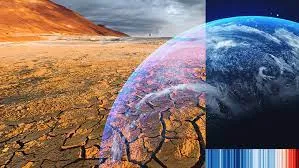
The most significant cause of climate change is the burning of fossil fuels. When fossil fuels such as coal, gas, and oil are burned, they release greenhouse gases into the atmosphere. These gases trap heat, leading to increased temperatures on the planet. This phenomenon is known as the greenhouse effect.
Deforestation also contributes to climate change, as it removes trees which act as a natural carbon sink. Trees absorb and store carbon dioxide from the atmosphere, helping to keep it from contributing to the greenhouse effect. Deforestation also reduces the amount of available habitat for many species, which can cause them to become endangered or even extinct.
Land use changes, such as urbanization, can also contribute to climate change. As cities grow, they cover up natural vegetation and replace it with asphalt and concrete, reducing the amount of land available for vegetation to absorb carbon dioxide. Additionally, cities often experience what is known as the “urban heat island” effect, where the presence of asphalt and concrete cause temperatures to rise.
The impacts of climate change will be significant and far-reaching. Rising temperatures will lead to more extreme weather events such as droughts, floods, and heat waves. These extreme weather events can cause destruction to property and loss of life. Additionally, sea levels are expected to rise due to melting polar ice caps and glaciers, causing coastal flooding and displacement of communities. Finally, climate change can cause species extinction, as some species may be unable to adapt to their new environments or migrate to cooler climates.

Climate change is a global issue that requires global solutions. Governments, businesses, and individuals all have a role to play in addressing the causes and impacts of climate change. Reducing emissions of greenhouse gases, protecting natural habitats, and developing green energy sources are all important steps that can be taken to mitigate the effects of climate change.
Examining the Role of Government in Addressing Climate Change
Climate change is one of the most pressing issues of our time, and it is essential that governments take an active role in addressing it. Government action is necessary to combat the global effects of climate change, such as rising sea levels, extreme weather events, and ocean acidification. Governments have a range of tools at their disposal, from establishing and enforcing regulations to providing incentives for sustainable practices.
Regulations are one of the primary ways governments can address climate change. Governments can set standards for emissions and the use of renewable energy, as well as the development and implementation of green technologies. These regulations can be enforced through taxation and fines, which provide an incentive for businesses and individuals to comply with the regulations. In addition, governments can provide tax credits and other incentives for businesses and individuals to invest in energy-efficient technologies and practices.
Governments can also play a role in promoting public awareness of climate change and its effects. Governments can fund public education initiatives, such as campaigns to raise awareness of the dangers of climate change and the importance of reducing emissions. They can also provide resources and support for research into renewable energy sources, green technologies, and other solutions to address climate change.
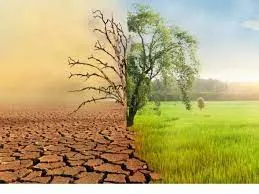
Finally, governments can work with other governments and international organizations to coordinate global action on climate change. Governments can join international agreements such as the Paris Agreement and work together to develop strategies to reduce emissions and promote sustainable practices.
In summary, governments have a key role to play in addressing climate change. Governments can set regulations, provide incentives, promote public awareness, and work with other governments to coordinate global action. With governments taking an active role, it is possible to address the climate crisis and protect our planet for future generations.
The Cost of Achieving Climate Change Goals
Climate change is an issue of global concern, as it is a primary driver of environmental and economic instability around the world. It is clear that taking action to reduce global emissions and limit the impacts of climate change is an imperative. However, the cost of achieving the necessary climate change goals is not insignificant.
The estimated cost of transitioning to a low-carbon economy by 2050 ranges from $1.2 trillion to $2.4 trillion per year. This cost is mainly associated with transitioning infrastructure in the energy, transportation, and agricultural sectors to cleaner and more efficient technologies. The cost of transitioning to renewable energy sources, for example, would include the cost of constructing the new infrastructure and transitioning away from fossil fuels.
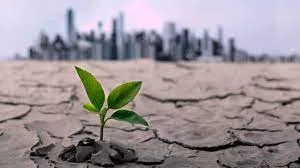
In addition to the direct costs of transitioning to a low-carbon economy, there are also indirect costs associated with climate change mitigation and adaptation strategies. These costs include things like health care associated with extreme weather events, increased insurance premiums, and the cost of retrofitting existing buildings to be more energy efficient.
The cost of achieving climate change goals is not only financial, but also social. The transition to a low-carbon economy will require large-scale changes to the way we produce and consume energy and the way we use natural resources. This could mean changes to employees’ jobs and ways of life, as well as an increase in government regulation and oversight.
Overall, the cost of achieving the necessary climate change goals is significant, and it is important to recognize that this cost is not only financial, but also social. It is clear that the cost of inaction far outweighs the cost of taking action, and thus it is important that governments and individuals alike take steps to reduce emissions and mitigate the impacts of climate change.
Exploring the Intersection of Climate Science and Policy
Climate science and policy are two intertwined disciplines that are essential for understanding the effects of global climate change and developing effective strategies for mitigating and adapting to its impacts. Climate science provides the foundations for understanding how the climate system works, including how it is changing and what the consequences of those changes are. Climate policy, on the other hand, focuses on formulating strategies to address climate change through both mitigation and adaptation measures.

When it comes to climate change, the scientific evidence is clear: global temperatures are increasing, ice sheets are melting, sea levels are rising, and extreme weather events are becoming more frequent and intense. This evidence is an important factor in the development of climate policy. In order to effectively address climate change, policy makers must understand the science behind it and the potential impacts that it can have. This understanding can then be used to inform the development of effective strategies for mitigating and adapting to climate change.
Climate science and policy are also closely linked in the way that they interact with each other. For example, climate science provides policy makers with the necessary evidence to support their policies, while policy can shape the direction and focus of climate research. This close relationship ensures that climate science and policy remain aligned and that the most effective strategies for addressing climate change can be implemented.
Ultimately, climate science and policy are closely intertwined disciplines that are essential for understanding the effects of global climate change and developing appropriate strategies for mitigating and adapting to its impacts. By understanding the scientific evidence and the potential impacts of climate change, policy makers can better inform their decisions and create effective strategies for addressing climate change.
Climate Change: What Are the Solutions?
Climate change is one of the most serious threats to global health and security. It is caused by the release of greenhouse gases into the atmosphere, trapping heat and leading to a warming of the planet. In order to prevent further damage to our environment, society must take action to reduce greenhouse gas emissions and find ways to adapt to the changing climate.
The most important solution to climate change is reducing greenhouse gas emissions. This can be done through the use of renewable energy sources such as solar, wind, and hydro power. By transitioning away from fossil fuels, we can drastically reduce the amount of carbon dioxide and other emissions that are released into the atmosphere. Additionally, investing in energy efficiency can help reduce emissions by making existing energy use more efficient.
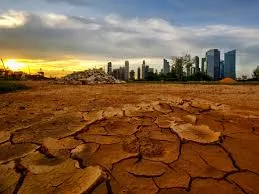
Another way to address climate change is through conservation and land management. By protecting natural habitats, forests, and wetlands, we can reduce the amount of carbon dioxide in the atmosphere. Additionally, sustainable agricultural practices can help reduce emissions by reducing soil erosion and limiting the use of chemical fertilizers.
Finally, adaptation is an important part of responding to climate change. Adaptation strategies can include flood prevention measures, drought resilience, and other infrastructure improvements that help communities prepare for the changing climate.
By taking these steps, we can create a more sustainable world and reduce the damage caused by climate change. It is essential that society takes action to reduce emissions, invest in renewable energy, protect natural habitats, and prepare for the changing climate.
The Economics of Climate Change Mitigation
Climate change has become an increasingly pressing issue in the modern world, and it is becoming more and more important to take action to mitigate its effects. Mitigation of climate change involves reducing the release of greenhouse gases into the atmosphere or increasing the sequestration of carbon dioxide. While it is important to take action to mitigate climate change, it is also important to understand that there are economic considerations involved.

The most cost-effective way of mitigating climate change involves reducing the release of greenhouse gases. Reducing emissions can be achieved through a variety of means, including energy efficiency, renewable energy, and carbon capture and storage. These measures can reduce emissions while also providing economic benefits, such as reducing energy costs and creating new jobs in the renewable energy industry.
In addition to reducing emissions, it is also important to increase the sequestration of carbon dioxide. This can be done through reforestation, afforestation, and improved agricultural practices. These measures can help to remove carbon dioxide from the atmosphere and store it in the biosphere. Reforestation and afforestation can also provide other benefits such as improved water quality and biodiversity conservation.
One of the most important considerations in mitigating climate change is the cost. While reducing emissions and increasing sequestration can have significant benefits, they can also be very costly. It is therefore important to consider the economic implications of mitigation measures before implementing them. Governments and companies must weigh the costs and benefits of mitigation measures to ensure that they are taking the most cost-effective approach.
Climate change mitigation is a complex issue with many economic considerations. Reducing emissions and increasing sequestration can have significant benefits, but they can also be very costly. It is therefore important to consider the economic implications of mitigation measures before implementing them. By understanding the economics of climate change mitigation, governments and companies can ensure that they are taking the most cost-effective approach to mitigating climate change.
The Role of International Cooperation in Addressing Climate Change
Climate change is a global issue that requires global action. International cooperation is essential for achieving successful outcomes in addressing the climate crisis. Without coordination between countries, it would be impossible to make progress in reducing emissions and mitigating climate change.
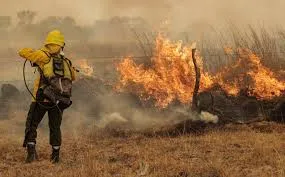
Cooperation can take many forms. Countries can work together to set binding emissions targets and develop international agreements to reduce emissions. They can also work together to share technology and best practices for reducing emissions and developing renewable sources of energy. International cooperation is also needed to finance climate change adaptation and mitigation measures, such as providing resources to developing countries to help them reduce their emissions and improve their resilience to climate-related risks.
International institutions such as the United Nations and its specialized agencies have a key role to play in driving international collaboration on climate change. These institutions can provide a forum for countries to come together to discuss climate change and develop joint solutions. They can also provide technical and financial support to help countries implement their climate change plans.
In addition to the role of international institutions, civil society organizations and the private sector can also play a role in driving international cooperation on climate change. These actors can advocate for ambitious climate policies, help facilitate knowledge-sharing between countries, and mobilize resources for climate action.
Ultimately, international cooperation is essential for making progress in addressing climate change. Countries must come together to develop coordinated strategies for reducing emissions, mitigating the impacts of climate change, and adapting to its effects. International institutions, civil society organizations, and the private sector must all collaborate to ensure that global climate action is successful.
Climate Change: An Intergenerational Challenge
Climate change is an intergenerational challenge that affects all aspects of life on Earth, and is one of the most pressing issues of our times. The consequences of this global phenomenon are far-reaching and have the potential to cause significant economic, social, and environmental disruption. As the average global temperature continues to rise, we can expect to see an increase in extreme weather events, increased risk of food insecurity, and a rise in sea levels that will have devastating effects on coastal communities.
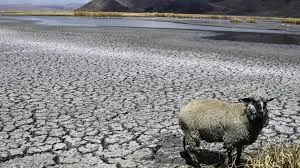
The effects of climate change are already being felt around the world, and they are likely to become even more pronounced in the coming years. This is why taking action now is so important. We must work together to reduce our carbon emissions, invest in renewable energy sources, and encourage sustainable development practices. It is also essential that we educate the next generation about the implications of climate change and the importance of taking action.
The importance of this intergenerational challenge cannot be overstated. Climate change will have a profound impact on all generations, and the decisions we make today will shape our future. We must work together to ensure that our actions are guided by science and reason, and that we leave a better world for our children and grandchildren. By taking action now, we can ensure that the future for our children and grandchildren is one of hope and opportunity.
The science and politics of climate change is an issue that is deeply intertwined with every aspect of our lives. It is a complex issue, with many different facets and influences. Climate change is a global challenge that requires cooperation and collaboration from individuals, communities, organizations, and governments. It is clear that how we respond to climate change today will have long-term impacts on our environment and society. It is up to us to take the necessary steps to mitigate and adapt to climate change. We must work together to ensure a safe and prosperous future for everyone.